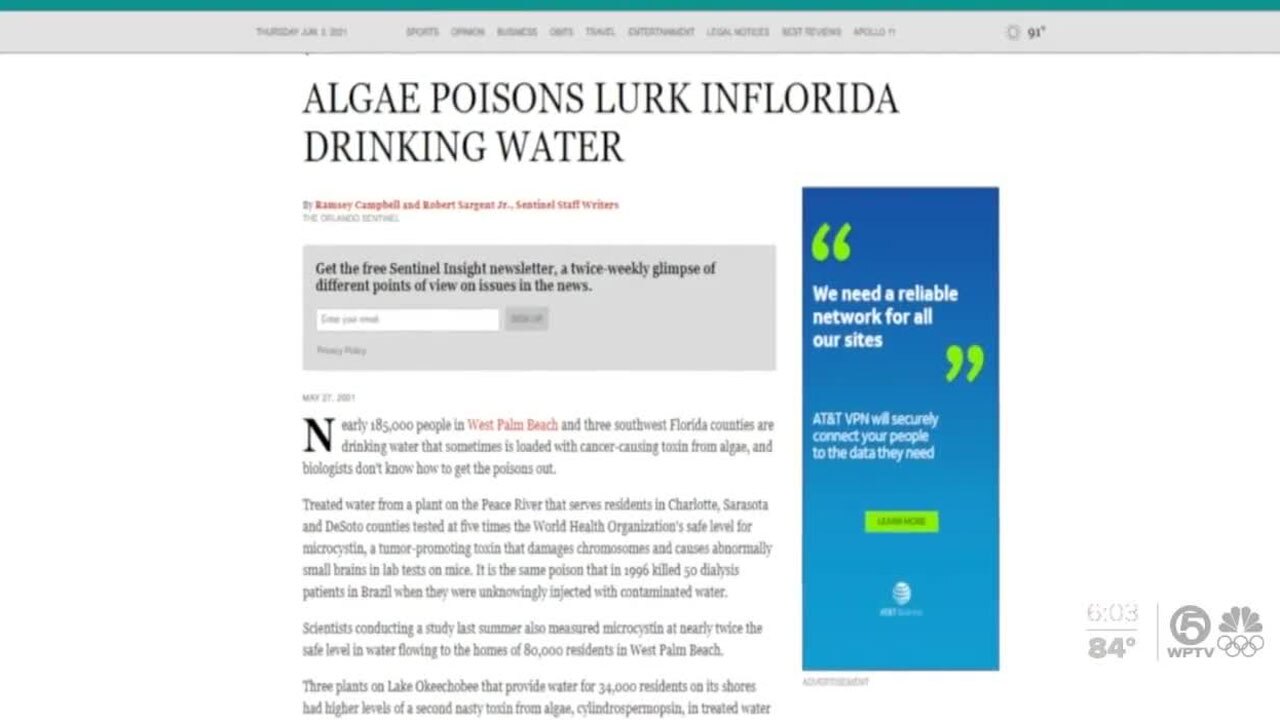WEST PALM BEACH, Fla. — A water utility engineer with decades of experience said the city of West Palm Beach could have been more proactive in handling the current water situation, saying he presented the city with a possible fix nearly a decade ago.
MORE: What are health effects of toxin found in West Palm Beach's water supply?
There are questions about whether the city should have alerted the public sooner instead of waiting nine days to issue an advisory.
Contact 5 shared the city of West Palm Beach's testing and notification timeline with water utility engineer Fred Bloetscher.
"Is this timeline acceptable to you?" asked Contact 5 reporter Michael Buczyner.
"It's going to meet the rules, but from my perspective and my experience as a utility manager and as a city manager, I would have expedited that as fast as I could," Bloetscher said. "If I had to pay extra to get the money back, if I had to send somebody in a car to Tallahassee, I would have done it."

A timeline provided by the city shows it took five days for the city to test the water again after the initial result came back high.
"The results came back on May 19, which was a Wednesday. Should there have been time to get more samples over to the lab before the end of the week?" Buczyner asked.
"We could have done it Wednesday. Go out and take the samples," Bloetscher said. "I would have had it there Thursday."
The timeline also shows it took a total of nine days for the city to notify the Florida Department of Health of the toxin in the drinking water following the first sample.
City officials said they were following state health department rules, which mandate water suppliers report the contaminant within seven days of receiving the confirmation sample.

"We got to remember that water utilities, the No. 1 issue is public health safety and welfare. There's really nothing else that matters," Bloetscher said.
He is familiar with West Palm Beach's water system.
"The intake system needs to be changed. I would change to an infiltration gallery," Bloetscher said.
In fact, he said he proposed that suggestion nearly a decade ago. Bloetscher said it works by water migrating through sand, removing toxins.
His proposal came after the Orlando Sentinel in 2001 reported on West Palm Beach's water supply and the presence of microcystin at nearly twice the World Health Organization limit in a sample.
"What ended up happening to your proposal?" Buczyner asked.
"Nothing," Bloetscher replied.
Bloetscher said he felt like that was the answer to prevent the toxins from getting into the drinking water.
"The reality is the source of the problem is in the surface water, and until you solve the surface water problem, the potential is always there for it to happen," Bloetscher said.




